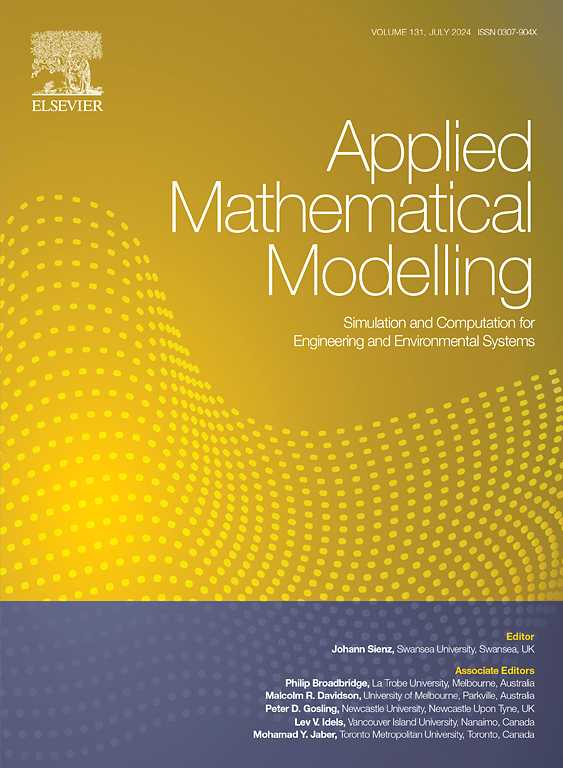New analytical solutions for stress and displacement in deeply buried noncircular tunnels incorporating the influence of seepage flow
IF 4.4
2区 工程技术
Q1 ENGINEERING, MULTIDISCIPLINARY
引用次数: 0
Abstract
High water pressure is a common condition during the construction and operation of deeply buried tunnels, which is a significant factor in the stability analysis of underground structures. In this study, the complex variable theory is extended to analytically solve the hydro-mechanical coupled problems for tunnelling problems, which is the first time that fully considers the seepage field influence on the mechanical field, any tunnel shape and the actual steady-state pore pressure distribution. The detailed formulations of the extended complex variable theory are provided, by which specific analytical solutions are proposed for stress, displacement and pore pressure around tunnels with arbitrary shapes. The theory extension and solutions are verified by the good agreement between the analytical results and numerical predictions.
Based on an investigation of the mechanical mechanism using analytical solutions, it is found that the influence of the seepage field on the mechanical field can be divided into two parts, including the surface loading effect and the flow effect. The surface loading effect is more significant than the flow effect. We also investigate the influence of key parameters on stress and tunnel convergence, such as Biot coefficient and tunnel shape, providing normalized charts as a reference for engineering applications. The developed hydro-mechanical coupled solutions can be used for both external and internal high-pressure conditions. Furthermore, it is a tool with a high potential for application to several relevant case studies, such as nuclear waste disposals.
求助全文
约1分钟内获得全文
求助全文
来源期刊

Applied Mathematical Modelling
数学-工程:综合
CiteScore
9.80
自引率
8.00%
发文量
508
审稿时长
43 days
期刊介绍:
Applied Mathematical Modelling focuses on research related to the mathematical modelling of engineering and environmental processes, manufacturing, and industrial systems. A significant emerging area of research activity involves multiphysics processes, and contributions in this area are particularly encouraged.
This influential publication covers a wide spectrum of subjects including heat transfer, fluid mechanics, CFD, and transport phenomena; solid mechanics and mechanics of metals; electromagnets and MHD; reliability modelling and system optimization; finite volume, finite element, and boundary element procedures; modelling of inventory, industrial, manufacturing and logistics systems for viable decision making; civil engineering systems and structures; mineral and energy resources; relevant software engineering issues associated with CAD and CAE; and materials and metallurgical engineering.
Applied Mathematical Modelling is primarily interested in papers developing increased insights into real-world problems through novel mathematical modelling, novel applications or a combination of these. Papers employing existing numerical techniques must demonstrate sufficient novelty in the solution of practical problems. Papers on fuzzy logic in decision-making or purely financial mathematics are normally not considered. Research on fractional differential equations, bifurcation, and numerical methods needs to include practical examples. Population dynamics must solve realistic scenarios. Papers in the area of logistics and business modelling should demonstrate meaningful managerial insight. Submissions with no real-world application will not be considered.
 求助内容:
求助内容: 应助结果提醒方式:
应助结果提醒方式:


